Front Cover
Computer Animation: Algorithms and Techniques
Copyright
Dedication
Contents
Preface
Overview
Organization of the Book
Acknowledgments
References
About the Author
Chapter 1: Introduction
1.1. Motion perception
1.2. The heritage of animation
1.2.1. Early devices
1.2.2. The early days of ``conventional´´ animation
1.2.3. Disney
1.2.4. Contributions of others
1.2.5. Other media for animation
1.3. Animation production
1.3.1. Principles of animation
Simulating physics
Designing aesthetically pleasing actions
Effectively presenting action
Production technique
1.3.2. Principles of filmmaking
Three-point lighting
180 rule
Rule of thirds
Types of shots
Tilt
Framing
Focus the viewer's attention
1.3.3. Sound
1.4. Computer animation production
1.4.1. Computer animation production tasks
1.4.2. Digital editing
In the old days
Digital on-line nonlinear editing
1.4.3. Digital video
1.4.4. Digital audio
Digital musical device control
Digital audio sampling
1.5. A brief history of computer animation
1.5.1. Early activity (pre-1980)
1.5.2. The middle years (the 1980s)
1.5.3. Animation comes of age (the mid-1980s and beyond)
1.6. Summary
References
Chapter 2: Technical Background
2.1. Spaces and transformations
2.1.1. The display pipeline
2.1.2. Homogeneous coordinates and the transformation matrix
2.1.3. Concatenating transformations: multiplying transformation matrices
2.1.4. Basic transformations
2.1.5. Representing an arbitrary orientation
Fixed-angle representation
2.1.6. Extracting transformations from a matrix
2.1.7. Description of transformations in the display pipeline
Object space to world space transformation
World space to eye space transformation
Perspective matrix multiply
Perspective divide
Image to screen space mapping
2.1.8. Error considerations
Accumulated round-off error
Orthonormalization
Considerations of scale
2.2. Orientation representation
2.2.1. Fixed-angle representation
2.2.2. Euler angle representation
2.2.3. Angle and axis representation
2.2.4. Quaternion representation
Basic quaternion math
Representing rotations using quaternions
Rotating vectors using quaternions
2.2.5. Exponential map representation
2.3. Summary
References
Chapter 3: Interpolating Values
3.1. Interpolation
3.1.1. The appropriate function
Interpolation versus approximation
Complexity
Continuity
Global versus local control
3.1.2. Summary
3.2. Controlling the motion of a point along a curve
3.2.1. Computing arc length
The analytic approach to computing arc length
Estimating arc length by forward differencing
Adaptive approach
Estimating the arc length integral numerically
Adaptive Gaussian integration
Find a point that is a given distance along a curve
3.2.2. Speed control
3.2.3. Ease-in/ease-out
Sine interpolation
Using sinusoidal pieces for acceleration and deceleration
Single cubic polynomial ease-in/ease-out
Constant acceleration: parabolic ease-in/ease-out
3.2.4. General distance-time functions
3.2.5. Curve fitting to position-time pairs
3.3. Interpolation of orientations
3.3.1. Interpolating quaternions
3.4. Working with paths
3.4.1. Path following
3.4.2. Orientation along a path
Use of the Frenet frame
Camera path following
3.4.3. Smoothing a path
Smoothing with linear interpolation of adjacent values
Smoothing with cubic interpolation of adjacent values
Smoothing with convolution kernels
Smoothing by B-spline approximation
3.4.4. Determining a path along a surface
3.4.5. Path finding
3.5. Chapter summary
References
Chapter 4: Interpolation-Based Animation
4.1. Key-frame systems
4.2. Animation languages
4.2.1. Artist-oriented animation languages
4.2.2. Full-featured programming languages for animation
4.2.3. Articulation variables
4.2.4. Graphical languages
4.2.5. Actor-based animation languages
4.3. Deforming objects
4.3.1. Picking and pulling
4.3.2. Deforming an embedding space
Two-dimensional grid deformation
Polyline deformation
Global deformation
FFD
Composite FFDs-sequential and hierarchical
Animated FFDs
Deformation tools
Moving the tool
Moving the object
Animating the FFD control points
4.4. Three-dimensional shape interpolation
4.4.1. Matching topology
4.4.2. Star-shaped polyhedra
4.4.3. Axial slices
4.4.4. Map to sphere
4.4.5. Recursive subdivision
4.5. Morphing (two-dimensional)
4.5.1. Coordinate grid approach
4.5.2. Feature-based morphing
4.6. Chapter summary
References
Chapter 5: Kinematic Linkages
5.1. Hierarchical modeling
5.1.1. Data structure for hierarchical modeling
A simple example
5.1.2. Local coordinate frames
5.2. Forward kinematics
5.3. Inverse kinematics
5.3.1. Solving a simple system by analysis
5.3.2. The Jacobian
A simple example
5.3.3. Numeric solutions to IK
Solution using the inverse Jacobian
Adding more control
Alternative Jacobian
Avoiding the inverse: using the transpose of the Jacobian
Procedurally determining the angles: cyclic coordinate descent
5.3.4. Summary
5.4. Chapter summary
References
Chapter 6: Motion Capture
6.1. Motion capture technologies
6.2. Processing the images
6.3. Camera calibration
6.4. Three-dimensional position reconstruction
6.4.1. Multiple markers
6.4.2. Multiple cameras
6.5. Fitting to the skeleton
6.6. Output from motion capture systems
6.7. Manipulating motion capture data
6.7.1. Processing the signals
6.7.2. Retargeting the motion
6.7.3. Combining motions
6.8. Chapter summary
References
Chapter 7: Physically Based Animation
7.1. Basic physics-a review
7.1.1. Spring-damper pair
7.2. Spring animation examples
7.2.1. Flexible objects
Mass-spring-damper modeling of flexible objects
A simple example
7.2.2. Virtual springs
7.3. Particle systems
7.3.1. Particle generation
7.3.2. Particle attributes
7.3.3. Particle termination
7.3.4. Particle animation
7.3.5. Particle rendering
7.3.6. Particle system representation
Updating particle system status
7.3.7. Forces on particles
7.3.8. Particle life span
7.4. Rigid body simulation
7.4.1. Bodies in free fall
A simple example
A note about numeric approximation
Equations of motion for a rigid body
Orientation and rotational movement
Center of mass
Forces
Momentum
Inertia tensor
The equations
7.4.2. Bodies in collision
Colliding bodies
Particle-plane collision and kinematic response
The penalty method
Testing polyhedra
Impulse force of collision
Computing impulse forces
Friction
Resting contact
7.4.3. Dynamics of linked hierarchies
Constrained dynamics
The Featherstone equations
7.5. Cloth
7.5.1. Direct modeling of folds
7.5.2. Physically based modeling
7.6. Enforcing soft and hard constraints
7.6.1. Energy minimization
Three useful functions
Useful constraints
Point-to-fixed-point
Point-to-point
Point-to-point locally abutting
Floating attachment
Floating attachment locally abutting
Energy constraints are not hard constraints
7.6.2. Space-time constraints
Space-time particle
Numerical solution
7.7. Chapter summary
References
Chapter 8: Fluids
8.1. Specific fluid models
8.1.1. Models of water
Still waters and small-amplitude waves
The anatomy of waves
Modeling ocean waves
Finding its way downhill
Summary
8.1.2. Modeling and animating clouds
Anatomy of clouds and cloud formation
Cloud models in CG
8.1.3. Modeling and animating fire
Procedurally generated image
Particle system approach
Other approaches
8.1.4. Summary
8.2. Computational fluid dynamics
8.2.1. General approaches to modeling fluids
Grid-based method
Particle-based method
Hybrid method
8.2.2. CFD equations
Conservation of mass
Conservation of momentum
8.2.3. Grid-based approach
Stable fluids
Density update
The velocity update
The simulation
8.2.4. Particle-based approaches including smoothed particle hydrodynamics
8.3. Chapter summary
References
Chapter 9: Modeling and Animating Human Figures
9.1. Overview of virtual human representation
9.1.1. Representing body geometry
Polygonal representations
Patch representations
Other representations
9.1.2. Geometry data acquisition
9.1.3. Geometry deformation
9.1.4. Surface detail
9.1.5. Layered approach to human figure modeling
Rigging
9.2. Reaching and grasping
9.2.1. Modeling the arm
9.2.2. The shoulder joint
9.2.3. The hand
9.2.4. Coordinated movement
9.2.5. Reaching around obstacles
9.2.6. Strength
9.3. Walking
9.3.1. The mechanics of locomotion
Walk cycle
Run cycle
Pelvic transport
Pelvic rotation
Pelvic list
Knee flexion
Ankle and toe joints
9.3.2. The kinematics of the walk
9.3.3. Using dynamics to help produce realistic motion
9.3.4. Forward dynamic control
9.3.5. Summary
9.4. Coverings
9.4.1. Clothing
9.4.4. Hair
9.5. Chapter summary
References
Chapter 10: Facial Animation
10.1. The human face
10.1.1. Anatomic structure
10.1.2. The facial action coding system
10.2. Facial models
10.2.1. Creating a continuous surface model
10.2.2. Textures
10.3. Animating the face
10.3.1. Parameterized models
10.3.2. Blend shapes
10.3.3. Muscle models
10.3.4. Expressions
10.3.5. Summary
10.4. Lip-sync animation
10.4.1. Articulators of speech
10.4.2. Phonemes
10.4.3. Coarticulation
10.4.4. Prosody
10.5. Chapter summary
References
Chapter 11: Behavioral Animation
Cognitive modeling
Aggregate behavior
11.1. Primitive behaviors
11.1.1. Flocking behavior
Local control
Perception
Interacting with other members
Interacting with the environment
Global control
Flock leader
Negotiating the motion
Collision avoidance
Splitting and rejoining
Modeling flight
11.1.2. Prey-predator behavior
11.2. Knowledge of the environment
11.2.1. Vision
11.2.2. Memory
11.3. Modeling intelligent behavior
11.3.1. Autonomous behavior
Internal state
Levels of behavior
Keeping behavior under control
Arbitration between competing intentions
11.3.2. Expressions and gestures
11.4.3. Modeling individuality: personality and emotions
11.4. Crowds
11.4.1. Crowd behaviors
11.4.2. Internal structure
11.4.3. Crowd control
11.4.4. Managing n-squared complexity
11.4.5. Appearance
11.6. Chapter summary
References
Chapter 12: Special Models for Animation
12.1. Implicit surfaces
12.1.1. Basic implicit surface formulation
12.1.2. Animation using implicitly defined objects
12.1.3. Collision detection
12.1.4. Deforming the implicit surface as a result of collision
12.1.5. Level set methods
12.1.6. Summary
12.2. Plants
12.2.1. A little bit of botany
12.2.2. L-systems
D0L-systems
Geometric interpretation of L-systems
Bracketed L-systems
Stochastic L-systems
Context free versus context sensitive
12.2.3. Animating plant growth
Parametric L-systems
Timed L-systems
Interacting with the environment
12.2.4. Summary
12.3. Subdivision surfaces
12.4. Chapter summary
References
Appendix A: Rendering Issues
A.1. Double buffering
A.2. Compositing
A.2.1. Compositing without pixel depth information
A.2.2. Compositing with pixel depth information
A.3. Displaying moving objects: motion blur
A.4. Drop shadows
A.5. Billboarding and impostors
A.6. Summary
References
Appendix B: Background Informationand Techniques B
B.1. Vectors and matrices
B.1.1. Inverse matrix and solving linear systems
B.1.2. Singular value decomposition
B.2. Geometric computations
B.2.1. Components of a vector
B.2.2. Length of a vector
B.2.3. Dot product of two vectors
B.2.4. Cross-product of two vectors
B.2.5. Vector and matrix routines
Vector routines
B.2.6. Closest point between two lines in three-space
B.2.7. Area calculations
Area of a triangle
Area of a polygon
B.2.8. The cosine rule
B.2.9. Barycentric coordinates
B.2.10. Computing bounding shapes
Bounding boxes
Bounding slabs
Bounding spheres
Convex hull
B.3. Transformations
B.3.1. Transforming a point using vector-matrix multiplication
B.3.2. Transforming a vector using vector-matrix multiplication
B.3.3. Axis-angle rotations
B.3.4. Quaternions
Quaternion arithmetic
Rotations by quaternions
Conversions
B.4. Denevit and Hartenberg representation for linked appendages
B.4.1. Denavit-Hartenberg notation
B.4.2. A simple example
B.4.3. Including a ball-and-socket joint
B.4.4. Constructing the frame description
B.5. Interpolating and approximating curves
B.5.1. Equations: some basic terms
B.5.2. Simple linear interpolation: geometric and algebraic forms
B.5.3. Parameterization by arc length
B.5.4. Computing derivatives
B.5.5. Hermite interpolation
B.5.6. Catmull-Rom spline
B.5.7. Four-point form
B.5.8. Blended parabolas
B.5.9. Bezier interpolation/approximation
B.5.10. De Casteljau construction of Bezier curves
B.5.11. Tension, continuity, and bias control
B.5.12. B-splines
B.5.13. Fitting curves to a given set of points
B.6. Randomness
B.6.1. Noise
B.6.2. Turbulence
B.6.3. Random number generator
B.7. Physics primer
B.7.1. Position, velocity, and acceleration
B.7.2. Circular motion
B.7.3. Newton's laws of motion
B.7.4. Inertia and inertial reference frames
B.7.5. Center of mass
B.7.6. Torque
B.7.7. Equilibrium: balancing forces
B.7.8. Gravity
B.7.9. Centripetal force
B.7.10. Contact forces
Friction
Viscosity
B.7.11. Centrifugal force
B.7.12. Work and potential energy
B.7.13. Kinetic energy
B.7.14. Conservation of energy
B.7.15. Conservation of momentum
B.7.16. Oscillatory motion
B.7.17. Damping
B.7.18. Angular momentum
B.7.19. Inertia tensors
B.8. Numerical integration techniques
B.8.1. Function integration for arc length computation
B.8.2. Updating function values
The (explicit) Euler method
Runge-Kutta
The implicit Euler method
The semi-implicit Euler method
B.8.3. Updating position
The Heun method
The Verlet method
The Leapfrog method
B.9. Optimization
B.9.1. Analytic Solution
B.9.2. Numerical methods
Hard and soft constraints, equality constraints, and inequality constraints
B.10. Standards for moving pictures
B.10.1. In the beginning, there was analog
Broadcast video standard
Black-and-white signal
Incorporating color into the black-and-white signal
Videotape formats
B.10.2. In the digital world
Compression/decompression
Digital video formats
Digital television formats
High-definition television and wide-screen format
B.11. Camera calibration
References
Index
Color Plates
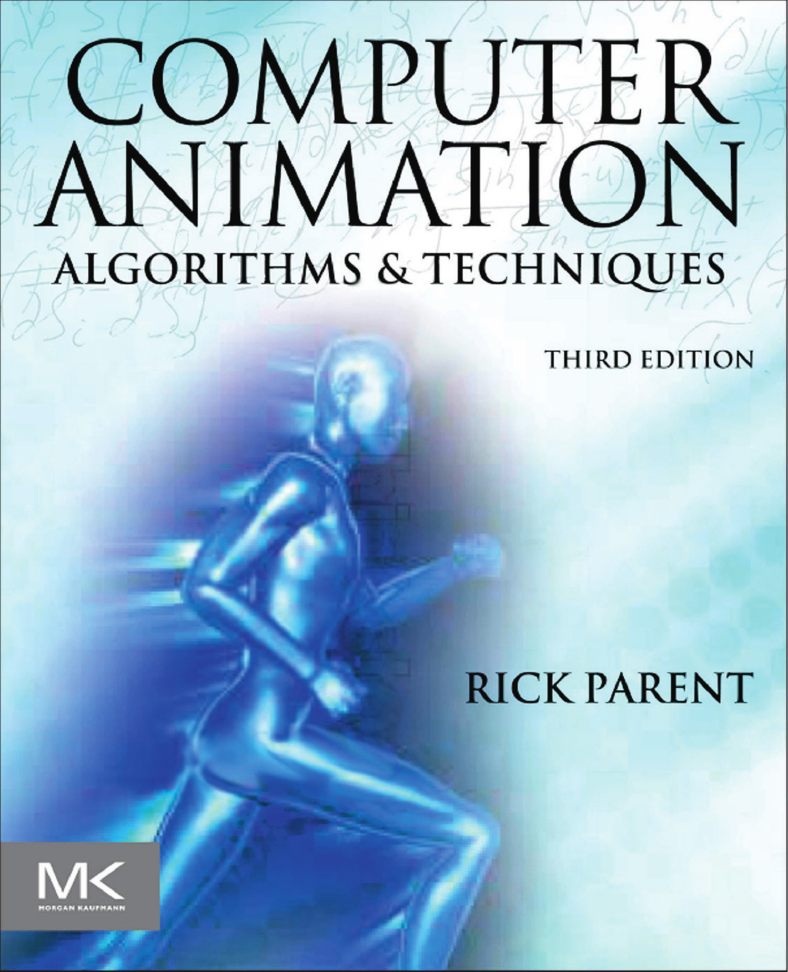
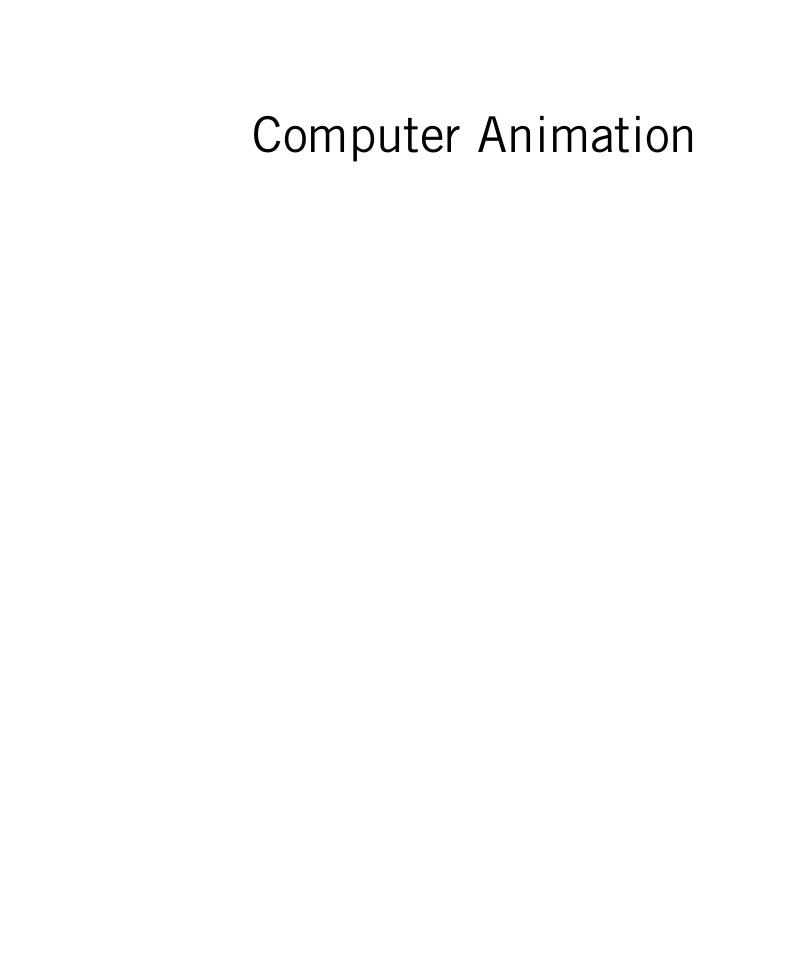


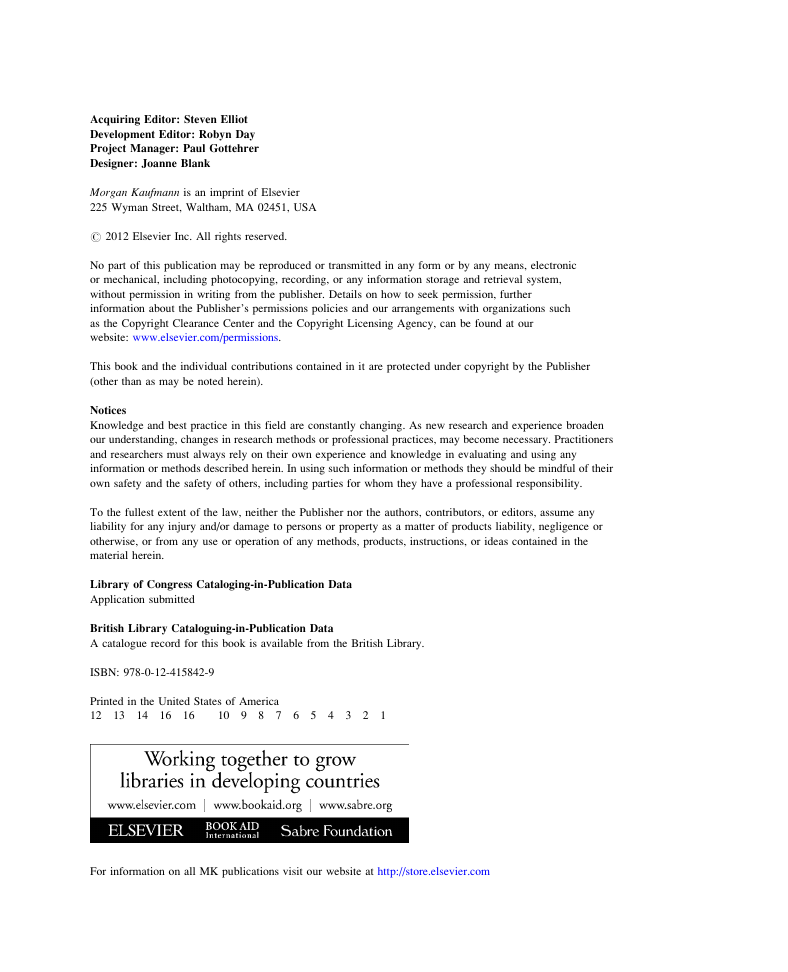
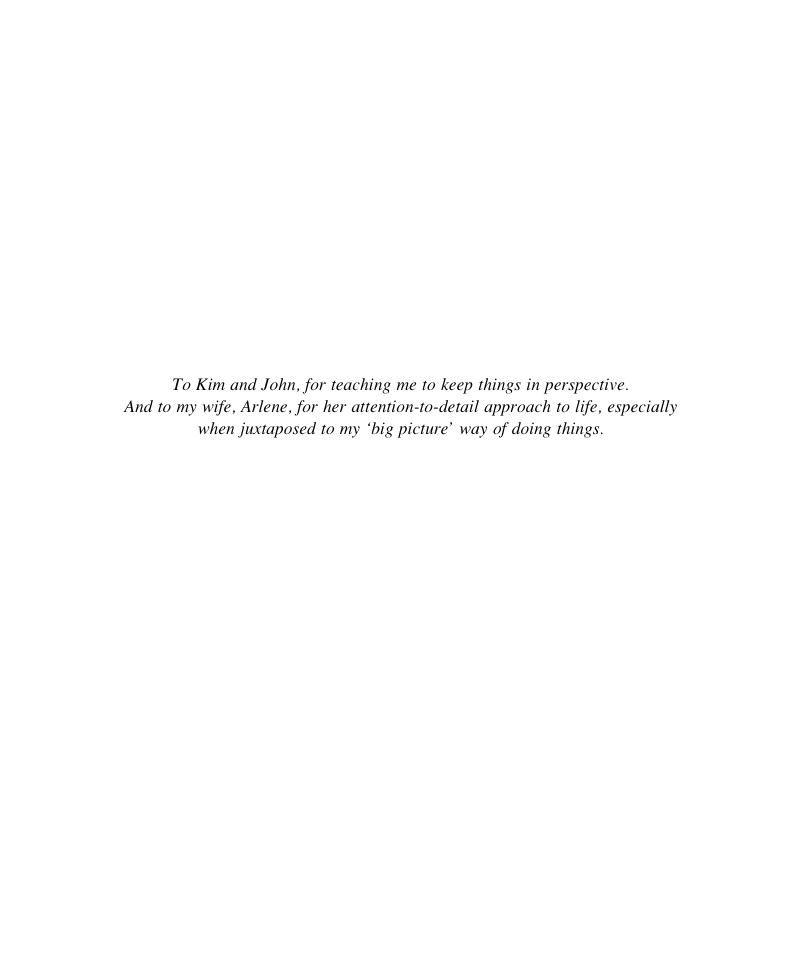

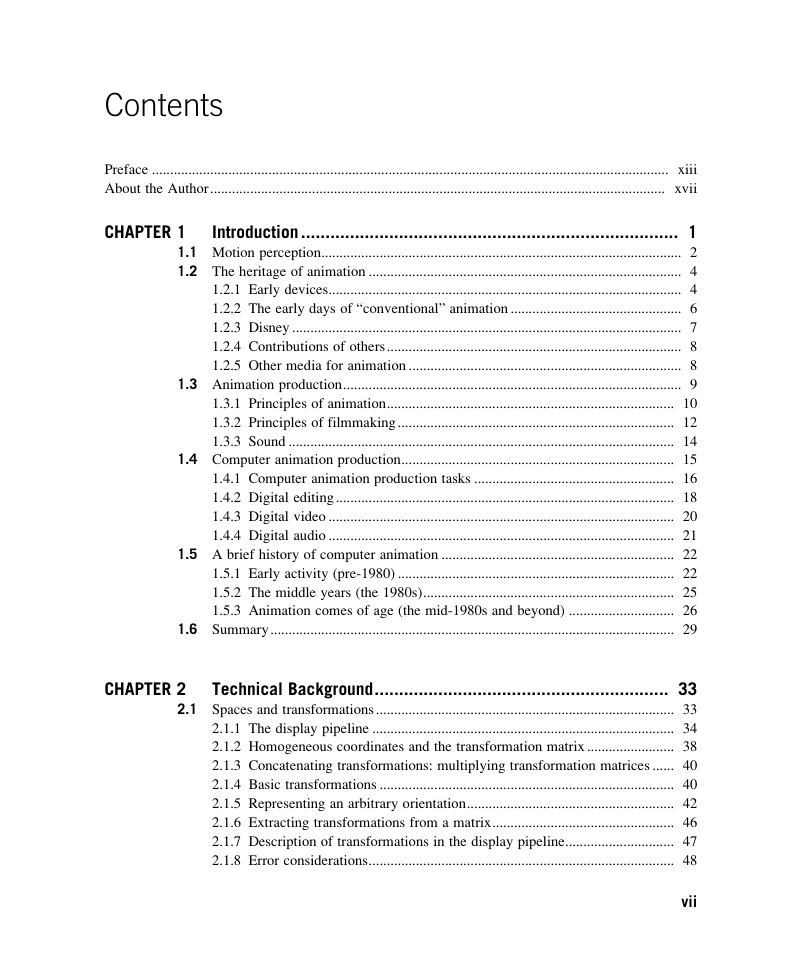








 2023年江西萍乡中考道德与法治真题及答案.doc
2023年江西萍乡中考道德与法治真题及答案.doc 2012年重庆南川中考生物真题及答案.doc
2012年重庆南川中考生物真题及答案.doc 2013年江西师范大学地理学综合及文艺理论基础考研真题.doc
2013年江西师范大学地理学综合及文艺理论基础考研真题.doc 2020年四川甘孜小升初语文真题及答案I卷.doc
2020年四川甘孜小升初语文真题及答案I卷.doc 2020年注册岩土工程师专业基础考试真题及答案.doc
2020年注册岩土工程师专业基础考试真题及答案.doc 2023-2024学年福建省厦门市九年级上学期数学月考试题及答案.doc
2023-2024学年福建省厦门市九年级上学期数学月考试题及答案.doc 2021-2022学年辽宁省沈阳市大东区九年级上学期语文期末试题及答案.doc
2021-2022学年辽宁省沈阳市大东区九年级上学期语文期末试题及答案.doc 2022-2023学年北京东城区初三第一学期物理期末试卷及答案.doc
2022-2023学年北京东城区初三第一学期物理期末试卷及答案.doc 2018上半年江西教师资格初中地理学科知识与教学能力真题及答案.doc
2018上半年江西教师资格初中地理学科知识与教学能力真题及答案.doc 2012年河北国家公务员申论考试真题及答案-省级.doc
2012年河北国家公务员申论考试真题及答案-省级.doc 2020-2021学年江苏省扬州市江都区邵樊片九年级上学期数学第一次质量检测试题及答案.doc
2020-2021学年江苏省扬州市江都区邵樊片九年级上学期数学第一次质量检测试题及答案.doc 2022下半年黑龙江教师资格证中学综合素质真题及答案.doc
2022下半年黑龙江教师资格证中学综合素质真题及答案.doc